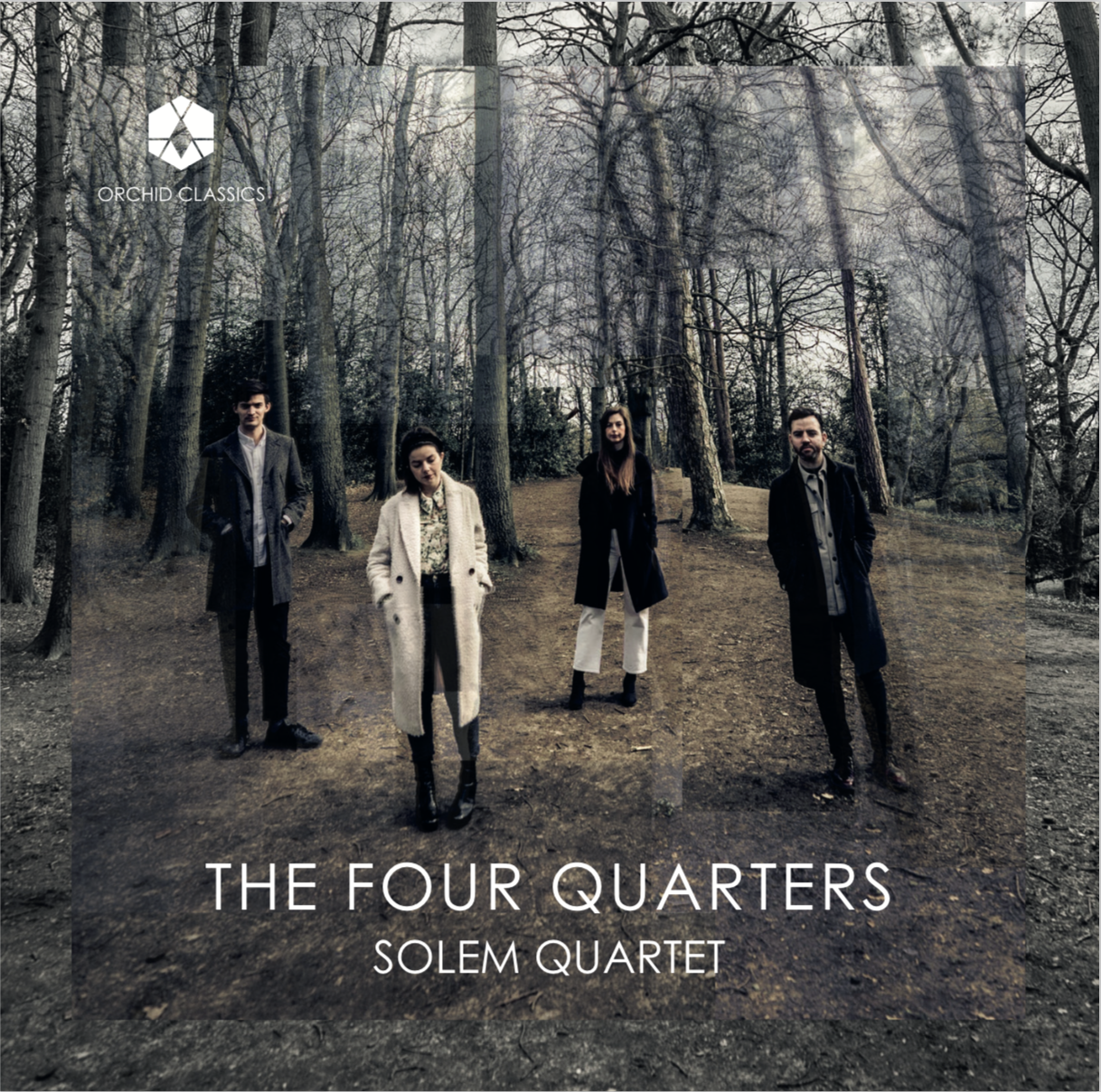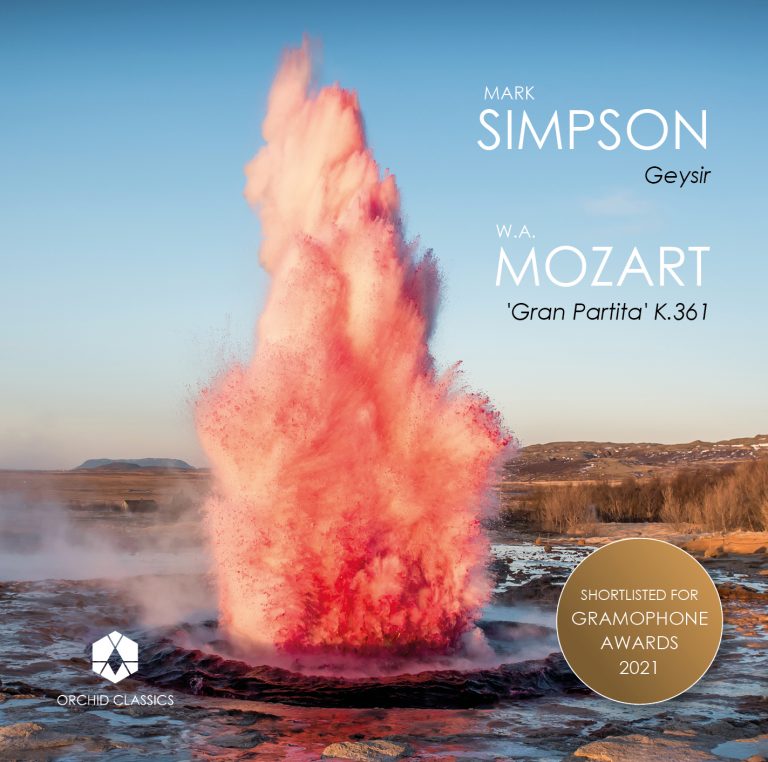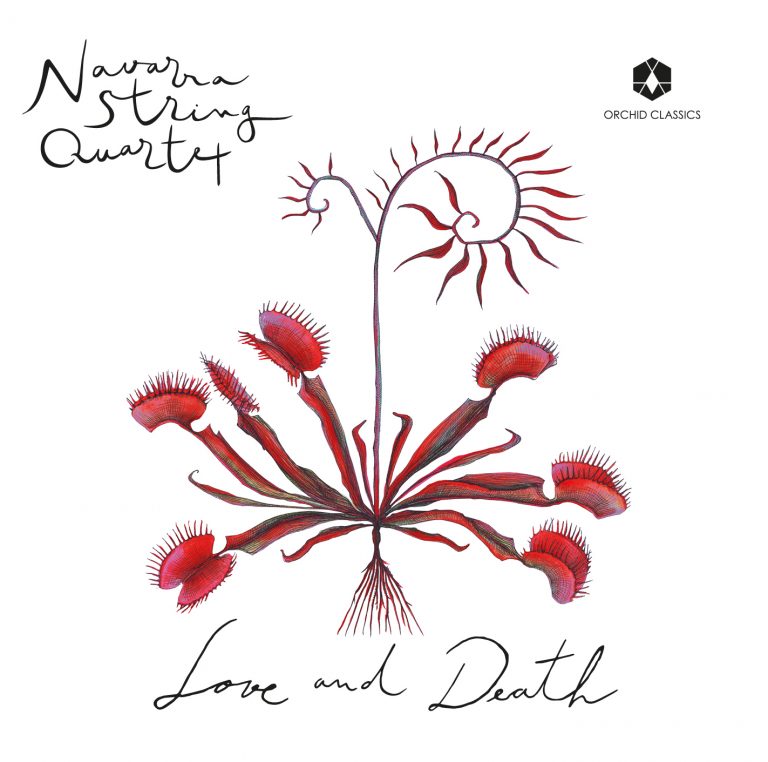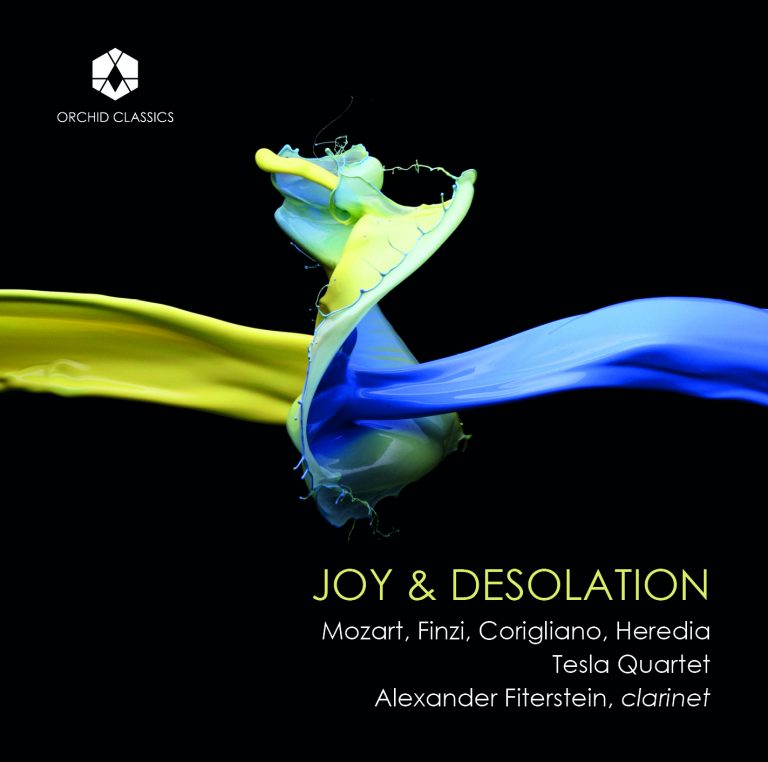Artist Led, Creatively Driven

The Four Quarters
Solem Quartet
Amy Tress, William Newell (violins),
Stephen Upshaw (viola),
Stephanie Tress (cello)
Release Date: September 17th
ORC100172
THE FOUR QUARTERS
Thomas Adès (b.1971)
1. The Four Quarters: I. Nightfalls
Ivor Gurney (1890-1937) & Henry Purcell (1659-1695)
arr. William Newell
2. Sleep
Cassandra Miller (b.1976)
3. Warblework: Hermit Thrush
Traditional arr. Stephanie Tress
4. Ca’ the Yowes
Thomas Adès
5. The Four Quarters: II. Morning Dew
Henry Purcell arr. Amy Tress
6. Now does the glorious day appear
William Marsey (b.1989)
7. Be nice to see you
Cassandra Miller
8. Warblework: Veery
Thomas Adès
9. The Four Quarters: III. Days
Florence Price (1887-1953) arr. William Newell
10. Summer Moon
Béla Bartók (1881-1945) arr. William Newell
11. An Evening in the Village, Sz.39 BB.51 No.5
Robert Schumann (1810-1856) arr. William Newell
12. Child Falling Asleep, Op.15 No.12
Aaron Parker (b.1991)
13. easqelä – suspended, spacious, in a dusky half light
Thomas Adès
14. The Four Quarters: IV. The Twenty-fifth Hour
Kate Bush (b.1958) arr. William Newell
15. And Dream Of Sheep
The Solem Quartet
Amy Tress, violin I
William Newell, violin II
Stephen Upshaw, viola
Stephanie Tress, cello
Thomas Adès (b.1971)
1, 5, 9 & 14 The Four Quarters
(I. Nightfalls, II. Morning Dew, III. Days & IV. The Twenty-fifth Hour)
The Four Quarters (2010), Adès’ second string quartet, describes the twenty-four hour-period in which the earth completes its rotation on its own axis – not, conventionally speaking, ‘a day’, but an expanse of time.
Nightfalls begins with the two violins playing in their high register. Clean, clear, and cold, they map out constellations of twinkling stars. Far below, the viola and cello’s earthy groans reveal that we are not up in space amongst them, but on the ground and looking up; their weary minor-mode harmonies are heavy and melancholic. Eventually the harmony’s gravitational pull is too much; the starry figures darken and draw nearer, now played by the second violin and viola, while the cello and first violin’s groans grow to a roar. With the quartet united in powerful dissonance, it feels as though the heavens have crashed down into the earth. Nocturnal, organ-like counterpoint slowly climbs until the violins are restored to their original position high above us.
Serenade: Morning Dew begins with pizzicato figures in thorny rhythmical counterpoint, each snap of a plucked note like pinpricks of moisture on blades of grass. Joyful vigour emanates from the periodic moments of arrival when all four instruments land on a chord together or find themselves dancing to the same tune in perfect unison. When pizzicato turns to bowing in the movement’s central section the music takes on the liquid, golden quality of morning sunshine.
In the monotony of the second violin’s rhythmic ostinato, Days reflects the rhythm of life, unrelenting and repetitive. Yet this rhythm is articulated across shifting bar lines in the music’s notation; for the musicians of the quartet, their perspective on the musical material is constantly changing. Events are marked in the sighing cadences of the other instruments; no day is quite the same. The ostinato grows to a shout by all four players, spread over four octaves with each instrument playing three notes simultaneously, before dissolving into feathery, delicate whispers.
In The Twenty-fifth Hour, the days and hours into which we divide our lives become the units of musical notation, bars and beats. Yet in a twisted rhythmic game, we can no more easily divide twenty-five beats into a manageable rhythm than we can fit an extra hour into our day. The refined beauty of the instrumental sounds conceals an internal struggle in the rhythmical complexity of the music; Adès subdivides the bar into 8+3+8+6. Wisps of harmonics give way to full-throated string sonorities, the cello and viola leaping from chord to chord underneath, its roughness and heaviness giving the music an ancient-sounding quality. The harmony drives forwards as the violins reach upwards, before, abruptly, they find what they were looking for; the music comes to rest on a hushed D major chord.
Ivor Gurney (1890-1937) & Henry Purcell (1659-1695)
2 Sleep
Henry Purcell
6 Now does the glorious day appear
Following an outbreak of bubonic plague in 1665 and the Great Fire of London in 1666, Purcell’s London was a city undergoing a magnificent period of rebirth and rebuilding. With the restoration of the English monarchy and the end of Cromwell’s Puritanism, there was increased demand for musical opulence from church and state and a boom in theatre. Purcell was organist at Westminster Abbey from age 20 until his death at 36, composing vast quantities of sacred and ceremonial music, whilst in the same period composing music for more than 40 plays.
These two works by Purcell show both sides of the composer’s output. Thy Hand Belinda, which appears here as the introduction to Ivor Gurney’s Sleep, is the recitative that precedes one of Purcell’s best-known pieces, the aria Dido’s Lament from Dido and Aeneas. The story comes from Book IV of Virgil’s Aeneid. Having sheltered the hero Aeneas on his return from the Trojan War, Queen Dido (of Carthage, North Africa) falls in love with him. Scheming witches (or the god Mercury, in the original text) force Aeneas to return home, and Dido resolves to kill herself out of grief and shame. Seeking conform from her maidservant Belinda, Dido sings “Darkness shades me… Death is now a welcome guest”.
Thy Hand Belinda is paired here with Ivor Gurney’s Sleep, from his Five Elizabethan Songs, composed in 1912 whilst Gurney was studying with Stanford at the Royal College of Music. Like other twentieth-century English composers, Gurney was inspired by the English music and literature of the 16th and 17th centuries (including Purcell), identifying the period as a cultural high watermark. Sleep sets a text by John Fletcher (1579-1625), in which the protagonist seeks refuge from life’s suffering: Come, sleep, and with thy sweet deceiving / Lock me in delight awhile. The melancholic, swaying accompaniment and yearning melody appealed to Finzi, who made a string arrangement of the piano part, echoed in this version for string quartet.
Now does the glorious day appear was an ode for Queen Mary’s birthday in 1689, with a text adapted from Thomas Shadwell. The alto aria By Beauteous Softness Mix’d with Majesty is the emotional core of the piece, here reimagined for string quartet in a lilting Baroque dance. A ‘ground bass’ (repeating bass line figure) is laden with sighing, overlapping melodic lines, the solo part dissolving into an ornamented string epilogue.
Cassandra Miller (b.1971)
3 & 8 Warblework (Hermit Thrush & Veery)
Cassandra Miller’s 2011 string quartet Warblework is a ‘poem to the regional sounds of the Pacific coast’. She includes the songs of three thrushes in its source material – birds native to Miller’s island homeland off the coast of Western Canada. When slowed down, these bird songs slide beautifully up and down the harmonic series, much like a string player sliding between harmonics. In these, the last two movements of the quartet, a kaleidoscopic array of harmonics immerse the listener as though coming from the treetops above. Sometimes crystalline and sometimes diving and swooping, Miller seems to evoke not just the sound but the flight of the birds.
Traditional
4 Ca’ the Yowes
Robert ‘Rabbie’ Burns (1759-1796), known as the Bard of Ayrshire, was a poet and lyricist. He composed in Scots dialect, but broadened his appeal by lightening his language and composing in English. Perhaps best known for Auld Lang Syne, which he says he ‘took down from an old man’, he collected and adapted old folk songs from across Scotland, making them his own. Burns heard Ca’ the Yowes sung by a schoolmaster, John Clunie (1757-1819), though the original is attributed to Isobel Pagan (1741-1821). Burns added several stanzas of his own composition, publishing the melody and lyrics in 1794. It is a timeless story of love amidst the wild nature of rural Scotland. Burns keeps the refrain of ‘Ca’ the yowes to the knowes’ (‘Drive the sheep to the hills’) from the original but makes less explicit the liaison between the narrator (a shepherdess) and her shepherd boy lover, reflecting their embrace instead in sumptuous descriptions of nature.
William Marsey (b.1989)
7 Be nice to see you
Humour and sadness are woven together with recorded and instrumental sounds in William Marsey’s Be nice to see you. Marsey uses everyday sounds and reframes them. A phone ringing, repeated to the point of abstraction, becomes not only a rhythmic pulse and harmonic pedal, but a heartbeat. Everyday chatter recorded from phone calls to his parents in Hartlepool is broken into fragments; field recordings from around his London and Hartlepool homes provide a sonic canvas for the piece whilst highlighting the physical distance between them. In between pulses of the phone-heartbeat comes a gentle, seesawing string motif that forms the musical thread of the piece, sometimes building in continuity and sometimes trailing away, the harmonic intensity seeming to respond to the tinny voices on the phone, colouring the voices with emotion. Marsey writes, “the piece is a bit homesick and a bit a tribute to my parents”.
Florence Price (1887-1953)
10 Summer Moon
“I have two handicaps”, Florence Price wrote in 1943. “I am a woman and I have some Negro blood in my veins.” Ten years earlier, Price’s Symphony in E minor was premiered by the Chicago Symphony Orchestra – the first piece by an African American woman to be performed by a major US orchestra. Yet after her death in 1953, her work largely faded into obscurity and is only now being rediscovered.
Summer Moon was composed in 1938 for Memry Midgett – a pianist who later performed with Count Basey and Billy Holiday. A plaintive, soulful melody, with halting, speech-like rhetoric is cast in a warm glow of jazz-infused harmony. With its poetic title evoking a summer night, the piece stands halfway between the Romantic piano miniatures of Rachmaninov or Debussy and the nostalgia-tinged jazz ballads of the time.
Béla Bartók (1881-1945)
11 An Evening in the Village
Hungarian music had often been used superficially by Western composers, as a taste of the exotic, or a vehicle for virtuosity. Bartók’s pioneering ethnomusicological studies of Hungarian music aimed to show the world the real thing, which he believed was a ‘primordial expression of the spirit of our people’.
An Evening in the Village originated as the fifth of Bartók’s Ten Easy Piano Pieces (1908-11) – folk-inspired educational piano pieces, which he orchestrated in 1931. An Evening in the Village alternates two melodies, stripped of their ornaments for greater simplicity and to conform to Bartók’s modernist sensibilities. One is slow and soulful, in which we can almost hear the crickets chirping; the other is fast, evoking a scene of cheerful dancing and mischievous children.
Robert Schumann (1810-1856)
12 Child Falling Asleep
Schumann’s Kinderszenen (‘Scenes from Childhood’) are poetic piano miniatures, written in 1838 for the young piano virtuoso and composition prodigy Clara Wieck who was soon to become his wife. Schumann aimed to make the pieces ‘as easy as possible’ in order to evoke childlike simplicity, inspired by Wieck’s observation that he sometimes ‘seemed like a child’.
Child Falling Asleep is the penultimate piece in the set. A softly insistent rocking figure, rising and falling, is echoed upwards in deftly interlocking figures, creating foreground and background in the music. The mood is sad, peaceful, and resigned. After sinking into the generous lower reaches of the texture and a warm major key, the urgency builds towards a desperate, unfinished final chord – perhaps sleep is not a quiet refuge for this child, but a dangerous and uncertain place.
Aaron Parker (b.1991)
13 easqelä – suspended, spacious, in a dusky half light
Aaron Parker’s easqelä is the fourth in a five-movement work composed for the Solem Quartet. The title is an invented word, not a clue to the composer’s ancestry or language: he is from Suffolk. Parker describes tracing the sunset in his home county, observing the striking colour difference between East and West yet being unable to see a point of transition. Suffolk’s large skies and flat, ancient landscape are reflected in the slow-moving chords of easqelä, marked ‘suspended, spacious, in a dusky half light’.
In the previous movement, the violist had played a haunting, desperate viola solo over a sustained drone from the other three players, surreptitiously recording it with a loop pedal, for use in this, the fourth movement. Its return, enriched by the earthy, spacious chords being played by the whole quartet (including the violist himself), is a powerful vision in full technicolour: an apparition in the sky.
Kate Bush (b.1958)
15 And Dream Of Sheep
Kate Bush was the first female to top the UK charts with a self-written song. Her fifth album Hounds of Love (1985) was a genre-confounding experiment, yet it marked her return to commercial form. The five tracks on the first side yielded four hit singles. Turning the cassette over, however, listeners were met with a second ‘suite’ of seven songs. Entitled The Ninth Wave, these songs chart the death and rebirth of a woman floating in the water, from night into morning.
And Dream Of Sheep features a lonely solo voice with serene piano accompaniment, here expanded to string quartet. Sleep is both dangerous and inviting; as Bush explained in typically dry and eccentric fashion, “it’s dangerous to go to sleep in water, you could drown”. Even as she embarks on a morbid journey into the fantastical unknown, the protagonist seems aware of the grim traces she will leave behind: “If they find me racing white horses/They’ll not take me for a buoy/Let me be weak, let me sleep and dream of sheep”.
© Anthony Friend, 2021
The Solem Quartet
Amy Tress, William Newell (violins), Stephen Upshaw (viola), Stephanie Tress (cello)
Praised for their “cultured tone” (Arts Desk), The Solem Quartet has established itself as one of the most innovative and adventurous quartets of its generation. A 2020 awardee of the Jerwood Arts Live Work Fund, the Solem Quartet takes its place amongst some of the UK’s brightest artistic voices.
Winners of the prestigious Royal Over-Seas League Ensemble Competition in 2014, they enjoy a busy concert schedule ranging from performances at venues such as London’s Wigmore and Queen Elizabeth Halls, to international chamber music festivals and tours in Europe and Asia.
Passionate about collaborating with the composers of their time, the Quartet have worked closely with Anna Meredith, Colin Matthews and Thomas Adès and recently gave the UK premiere of Jonny Greenwood’s Suite from “There Will be Blood” (for string quartet) at the V&A Museum.
Their ground-breaking series ‘Solem Lates’ was created in 2019, with the aim of presenting classical music in a fresh way and reaching broader audiences. Their projects have included bringing music for quartet + electronics to nightclubs around the UK, performing Bartók’s 3rd Quartet from memory, and collaborating with Picturehouse Cinemas to bring Yorgos Lanthimos’ The Lobster to life through live score performances alongside the iconic film.
Begun in 2021, their Beethoven Bartók Now project presents the works of these two giants alongside 6 major commissions, often collaborating with other artists and performers to bring new life to the music. One of the surrounding components of this far-reaching project is Writing for Quartet, generously supported by the Royal Philharmonic Society, a biannual workshop for composers of all backgrounds.
Since 2016 they have been Quartet in Residence at the University of Liverpool as well as Ensemble in Residence at Aberystwyth MusicFest.










